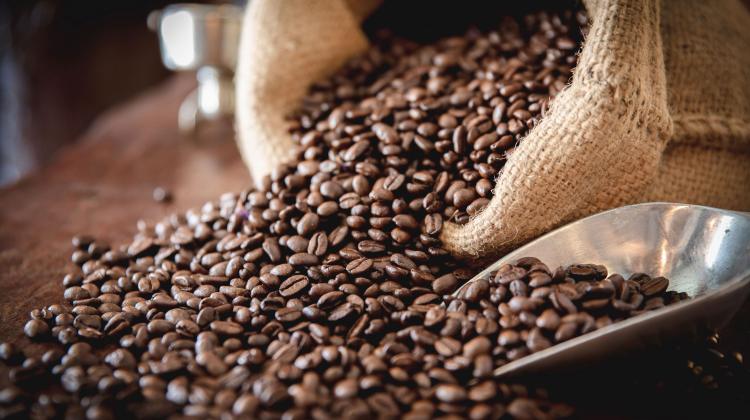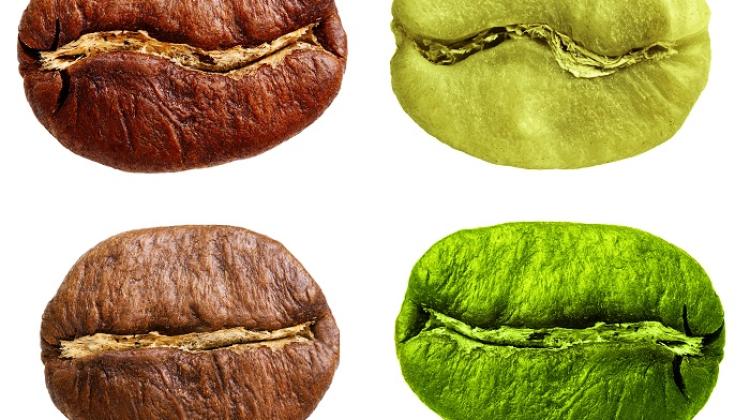Lifestyle is responsible for caffeine consumption by breastfeeding mothers, says researcher
 Credit: Adobe Stock
Credit: Adobe Stock
Breastfeeding women in cities consume more caffeine than those living in rural areas. Breastfeeding mothers with secondary education are more likely to use caffeine products than those with higher education, and women aged 34-44 are more likely to use them than younger mothers, says Aleksandra Purkiewicz from the Doctoral School of the University of Warmia and Mazury in Olsztyn.
Caffeine is a compound from the methylxanthine group, a psychoactive substance that is quickly absorbed from the gastrointestinal tract, penetrates the blood-brain barrier and passes through the placenta to the foetus, amniotic fluid and mother's milk. Too much caffeine consumed by a breastfeeding mother may negatively affect the baby.
'The main symptoms of an excessive consumption include nausea and irritability in infants, sleep problems, convulsions, and in extreme cases, tremors and increased muscle tension', says Purkiewicz, a doctoral candidate at the Department of Commodity Science and Food Analysis, Faculty of Food Science, University of Warmia and Mazury in Olsztyn, who investigated the factors influencing the caffeine content in human milk.
The results of her research were published in Nutrients - an international journal devoted to human nutrition.
There are reports that excessive caffeine intake during breastfeeding can also cause weight problems in children in later years. 'According to reports, these symptoms were significantly reduced after limiting the consumption of products containing caffeine to the recommended dose,’ says Purkiewicz.
The scientist examined factors influencing the caffeine content in breast milk, such as mothers' age, level of education, place of residence and lactation stage, and assessed the impact of the consumption of caffeine-rich products on its content in breast milk.
'Caffeine identified in the milk of the studied women along with its three metabolites: paraxanthine, theophylline and theobromine,’ says Purkiewicz. According to her, more caffeine and its metabolites were identified in the milk of women living in urban areas; milk of women with secondary education; milk of women aged 34-44; breast milk from the third stage of lactation (mature milk).
'Women from these groups drank coffee more than twice a day, and almost 30 percent of them prepared coffee with more than two teaspoons,’ says Purkiewicz.
The researcher observed a strong positive relationship between caffeine consumption and its content in breast milk.
During the study, caffeine consumption was assessed using the 3-day continuous recording method.
'The breastfeeding women consumed the following sources of caffeine: instant coffee, black tea in bags and loose leaf tea, milk chocolate and dark chocolate (over 70 percent cocoa),’ says Purkiewicz.
The researcher found that lifestyle largely influenced the frequency of caffeine consumption.
Women with secondary education consumed more coffee than women with higher education. 'Women with higher education were less likely to use products with caffeine, which may be related to greater awareness of the impact of this substance in excess on infants and young children,’ the researcher points out.
Women aged 34-44 drank coffee more than twice a day, which means they consumed larger amounts of caffeine than younger mothers. 'Women in this age group also consumed larger amounts of chocolate, which translated into higher levels of theobromine - one of the metabolites of caffeine, the main methylxanthine contained in cocoa,’ she adds.
In turn, women living in cities drank coffee more often than women living in rural areas. 'Larger cities are often associated with a faster pace of life, and thus with the use of coffee in excess as a means of treating excessive fatigue,’ the researcher says. She adds that in larger cities there are many confectioneries and cafes where coffee is served in an attractive way (in a colourful glass, decorated, accompanied by a favourite cookie), which effectively attracts consumers.
Women in the third stage of lactation drank coffee more often than those in the first and second stages.
A positive phenomenon was that none of the surveyed women consumed energy drinks or other sweet drinks containing caffeine while breastfeeding.
According to data from the World Health Organization (WHO), a small percentage of women consume caffeine in larger amounts than recommended (the norm is 250-300 mg, i.e. 2-3 cups of coffee prepared from approximately two teaspoons, but this value depends on the type of coffee, method of preparation and its origin). 'It is recommended that both pregnant and breastfeeding women limit their caffeine intake to this value. This amount of caffeine consumed during breastfeeding does not have a negative impact on the baby,’ says Purkiewicz.
In her study, breastfeeding women followed the recommendations regarding caffeine consumption during lactation and only a small percentage consumed caffeine in amounts greater than 300 mg.
'The diet of breastfeeding women has a significant impact on the level of caffeine in breast milk,’ the researcher says. She concludes that the adverse effects on a child's health resulting from excessive exposure to caffeine can be avoided if the diet and WHO standards are followed.
The supervisor of Purkiewicz's doctoral thesis is Dr. Renata Pietrzak-Fiećko, a professor at the University of Warmia and Mazury. Finf out more in the source material: Purkiewicz, A.;Pietrzak-Fiećko, R.; Sorgel, F.; Kinzig, M. 'Caffeine, Paraxanthine, Theophylline, and Theobromine Content in Human Milk'. Nutrients 2022, 14, 2196. https://doi.org/10.3390/nu14112196 (PAP)
PAP - Science in Poland, Anna Mikołajczyk-Kłębek
amk/ bar/ kap/
tr. RL
Przed dodaniem komentarza prosimy o zapoznanie z Regulaminem forum serwisu Nauka w Polsce.



















